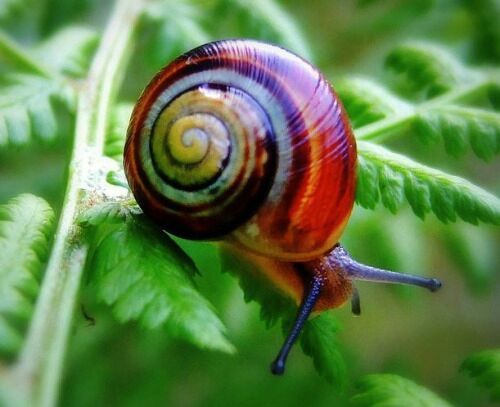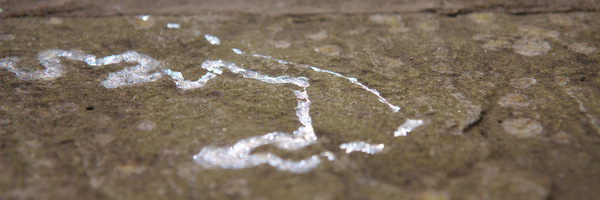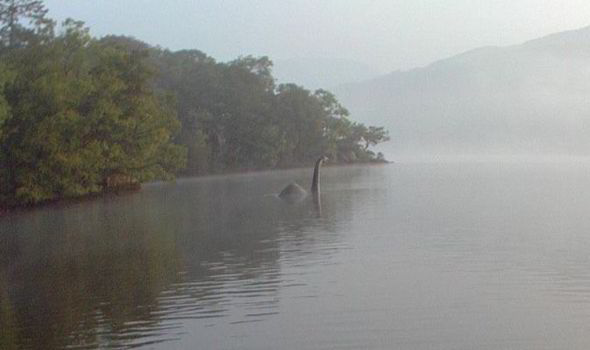Announcements
Welcome to Care of Magical Creatures 501!
This is the fourth year of Care of Magical Creatures.
If you have any questions about the course, please contact Professor Aspen, who has kindly accepted to be in charge of it while a new professor is appointed by the Ministry of Magic.
Lesson 6) Under the Sea
Under the Sea
Hello everyone and welcome back! I’m pleased to report that the marks on the midterms were mostly very positive. Professor Anne and I are both, as usual, very proud! It is now time to get back into the swing of things. We aren’t slowing down, as we will be discussing two new creatures today. Take out your parchment because we have quite a bit of information to go through and I want to go through it quickly!
Streelers: Toxic Trailblazers
The first creature we will be discussing today is called a Streeler. Streelers are magical, giant snails. They are categorized as Beasts and have an XXX classification rating by the Ministry of Magic. The name Streeler comes from the Irish word straoillum, which means “to trail along the ground.” That doesn’t really have any relevance right now, but we will touch back on that bit of information in just a few moments.
Streelers are very beautiful snails. They have the ability to change the color of their shells every hour, and this is what they are most commonly known for. However, this should not be their only notable feature. Remember that when dealing with anything in the magical world, especially plants and animals, there is usually more to what you see. This definitely rings true for Streelers.
 Right from the get go, you can see that the shells on Streelers contain some decently sharp spikes. They don’t look particularly painful. However there’s more to what you see. These pointy spikes are poisonous and will hurt any living creature that is poked. This is the Streeler’s defense mechanism. These spikes come in handy when there are predators near. They can retract them back into their shell, meaning that you don’t always see them.
Right from the get go, you can see that the shells on Streelers contain some decently sharp spikes. They don’t look particularly painful. However there’s more to what you see. These pointy spikes are poisonous and will hurt any living creature that is poked. This is the Streeler’s defense mechanism. These spikes come in handy when there are predators near. They can retract them back into their shell, meaning that you don’t always see them.
Now, recall when we were talking about the origin of the name “Streeler.” I told you that the root word meant “to trail along the ground.” This is a common characteristic when you consider any kind of snail. Anywhere they travel, they leave a trail of slime behind on whatever surface they were moving on. I’m sure you can see where this is going, but a Streeler’s trail is not like a mundane snail’s. The trail of slime that Streelers leave is very toxic. This venom is so acidic that it burns nearly all the vegetation it touches. Below is a picture of a trail of slime.

 Streelers are native to Africa but that won’t stop you from finding them in other regions. Streelers have been legally bred by magical breeders in Europe, Asia, and North America. Magical breeders in Australia and New Zealand have shown interest in these giant snails though these countries have strict laws regarding select imported magical creatures. Streelers aren’t allowed through their borders, though exceptions are made for the specimens sent to the magical zoos.
Streelers are native to Africa but that won’t stop you from finding them in other regions. Streelers have been legally bred by magical breeders in Europe, Asia, and North America. Magical breeders in Australia and New Zealand have shown interest in these giant snails though these countries have strict laws regarding select imported magical creatures. Streelers aren’t allowed through their borders, though exceptions are made for the specimens sent to the magical zoos.
Behavior and Domestication
So why would breeders all over the world want to raise these creatures? The answer is simple; they are exotic animals, and they are very expensive. Streelers are often kept as pets by many witches and wizards. They aren’t your common household pet, but they are gaining popularity. They are very visually pleasing, and people seem to love their colors, resemblant of a kaleidoscope. Their colors range from all the colors of the rainbow and in no particular order. They can be mesmerizing and exciting to watch.
They are typically just for show, but there are times when one will need to handle their Streeler. Whether you are offering it food, or moving the creature so that you can clean its habitat, you will need to handle it with care. In order to safely handle Streelers, please always wear a reliable pair of dragonhide gloves. If you neglect to wear your gloves, the venom won’t cause permanent damage when treated, and any skilled healer can fix this injury. However, it is still an extremely unpleasant sensation!
So to conclude, yes, they are very pretty and exotic, but they’re dangerous if you don’t know what you’re doing. In fact, one must have a license in order to own or breed Streelers. There is a reason we don’t allow them here at Hogwarts. Imagine if one was set loose in Professor Aspen’s greenhouses!
Magical Properties
Now, I know it’s been a few years but think back to Lesson Two of your Second Year. We introduced two new creatures that day, one of which we will be vaguely discussing again today. Do you all remember learning about Horklumps? They are magical beasts that are often mistaken as fungi. Yes, this does have some relevance! I bring them up because Streeler venom is actually one of the only known substances that has the power to kill Horklumps.
And that’s not the only other creature that Streelers affect. Recall Lesson Three of your Third Year when you learned about Doxies. Streelers have a different kind of impact on them, which you might appreciate! When Streeler shells are (carefully) collected, they can also be used as a potion ingredient. They are used in Doxycide, which you should know by now is a potion used to temporarily paralyze Doxies so that you can easily remove them from your home without being attacked. This comes in handy for someone like me, since I am very allergic to Doxy bites!
You know now that Streelers can harm certain creatures, they are useful in potions, and they can destroy plants. The latter is not all bad, however. When their venomous slime touches the earth, it can actually have benefits at times. The slime can add nutrients to soil if it is not beneficial enough to grow plants. Some witches and wizards in Africa actually keep Streelers not as a prized pet, but rather to sustain a healthy garden.
Diet
Like any mundane snail, Streelers will feed on what can be found in their own habitat. There are, of course, restrictions on their diets, like all animals. For example, the diets of mundane snails vary by their species and their regions, though most of them are herbivores.
As for Streelers, you can imagine it would be difficult for them to eat plants since their venom has such a powerfully destructive effect on them. So they aren’t omnivores or herbivores, but they aren’t strictly carnivores either! They are giant snails, but they aren’t big enough to eat something like a small rodent or bird. Specifically, Streelers are insectivores. They will simply eat the insects they come across in their environment.
Reproduction
If you know anything about snail reproduction, it will help to know that Streeler reproduction is very similar! The way that they mate is very curious and unique. It may be a somewhat difficult concept to grasp, so I’ll try to explain it as best as I can.
Streelers and mundane land snails alike are hermaphrodites. We have discussed this term before in the past but just in case you need a refresher, hermaphrodites contain both female and male reproductive organs. Their reproductive organs are located on the bottom of their bodies, near the front, which allows them to mate more easily. When two Streelers mate, they will both insert sperm in the other, fertilizing the other’s eggs, so that they will both create offspring.
Once mated, the two Streelers go their separate ways and find a safe place to lay their eggs. They can lay anywhere from 50 to 100 eggs at one time, and they typically lay eggs once every 3 months. They generally prefer to lay their eggs in cool, soft soil. It takes four weeks for a Streeler egg to develop and hatch.
After the eggs have hatched, the young will be very weak. Their shells will still be soft, so their instinct is to consume calcium. The young Streelers may eat their own eggshell, or eat the soil they were born in. While their shell is in this underdeveloped stage, it may be somewhat transparent or clear. However, their shells still do change colors, just at 30 minute intervals. Until they are strong like their parent’s shell, it will be opaque and pastel in color. It’s very pretty to look at! It will take about four weeks for the babies to strengthen their shells and grow into a smaller version of their parents. Once they have reached this point in their lives, they will leave their parents and their nest.
Streelers reach sexual maturity at one year old, when they are fully grown, and a healthy Streeler’s average lifespan will be 9-10 years (but the oldest known Streeler was 21 years old!).
And that’s all I have for you on Streelers. Thank you all for listening! Feel free to come to me if you have any questions. I will now hand over the lesson to Professor Anne.
Kelpies: Water Demons of Britain and Ireland
The second creature we are looking at today is a water demon native to Britain and Ireland. The most famous of them all, the Loch Ness Monster, was covered during Cryptozoology Creature Feature, but we will take another look at Nessie again today. As you may remember from Defense Against the Dark Arts last term, the Loch Ness Monster is considered a kelpie. Yes, today we will be covering kelpies!

Kelpies are classified as XXXX and given a Beast status by the Ministry of Magic. While they originated in Scotland, they are presently found throughout Britain and Ireland. While in this picture it is depicted as a horse, a kelpie is a shapeshifter, so it can be anything it likes. Kelpies are often seen in their horse form, but we have yet to know their true, distinct form. When they are not in their horse form, they are often in a sea serpent form, which accounts for the majority of Muggle sightings.

The first kelpie ever documented by Muggles was the Loch Ness Monster. The creature had its head out of the water while a Muggle was near. Though the kelpie didn’t see the Muggle, the Muggle saw him, and he snapped a quick picture, resulting in the blurry photo we have come to know as the Loch Ness Monster today. You may recall from Cryptozoology Creature Feature, if you took the course, that this photo was later found out to be a hoax. This was because the Ministry of Magic heard about the situation, and modified the memories of the involved individuals, making them think they had faked the incident. The kelpie of Loch Ness chooses to be in a sea serpent form the majority of the time, which only causes the rumors of a sea monster in Loch Ness to spread far and wide, making it one of the most iconic cryptids in the world.
While the Loch Ness Monster has provided entertainment to many for several decades, she is not the only kelpie. Furthermore, she is one of the most tame of the kelpies. Kelpies are rated as XXXX, which by Ministry of Magic standards means that they are dangerous, require specialist knowledge, and/or that a skilled wizard may be able to handle it. The last part of that definition will never apply to kelpies. We do not discuss them with the intent of you caring for them. We discuss them because as a member of the Department for the Regulation and Control of Magical Creatures, they expect you will know how to handle this creature, should the need ever arise. Because you never know what form a kelpie will take, you may run into one and possibly not realize it until the very last moment. It is essential you are adequately prepared with how to handle kelpies in this scenario.
The Loch Ness Monster is not the only kelpie you will encounter in Great Britain. Another kelpie you might run into is the Bownessie, or so it is called by Muggle cryptozoologists. The earliest sightings of this kelpie are actually fairly recent, beginning in 2006. This sea serpent is native to Lake Windermere, which is why you may also hear it referred to as the Lake Windermere Monster. Muggles consider this kelpie to be the “New Nessie.” Lake Windermere is the largest natural lake in England, meaning it is frequented by tourists and natives. Below is an image created of Bownessie, because no Muggle has been able to snap a picture yet. This kelpie has only been around for a decade!
Kelpies are known for luring victims out into the water. They might even show them their horse form, beautiful and majestic to an unsuspecting Muggle. Once the victim is far enough out, the kelpie drags them under, drowning them. After that, well, it breaks my heart to say it, but kelpies are carnivores who consume human flesh. The only portion they do not consume are the entrails, which they let float to the surface. This is why they are given demon status by the Ministry of Magic. Like other water demons we have covered, namely grindylows and kappas, kelpies are given this status for their violent tendencies towards humans. Whereas there have been no reports of maulings by grindylows in the recent decades, this is not the case with kelpies. Many tourists and campers, Muggles and wizards alike, go missing every year because of kelpies. While the Ministry of Magic can attribute it to kelpies, the mundane world does not have that luxury.
There is no way to truly escape a kelpie, but you can render them harmless for a short time, to continue on your way, get out of the area, or quickly finish up some research in the area. Using a Placement Charm, you can place a bridle on the kelpie’s head. Now, the duration of the charm depends on two things: the willpower of the caster and the willpower of the kelpie. Kelpies are pure magical energy, and to try to overcome that is near impossible. In order to truly defeat a kelpie, you would have to cut off their magical energy. However, in doing this, you would be taking away all magical energy, making yourself, and every other witch and wizard, a Muggle. On average, a witch or wizard can hold the Placement Charm for about fifteen minutes. Imagine trying to hold the concentration to keep a bridle on the muzzle of a kelpie, while also thinking about what you need to do while the kelpie is subdued.
As mentioned above, kelpies are made of magical energy. It is part of why they have the ability to shapeshift. Now, when we consider this fact, we must ask the following question:

This is a very interesting question. We know that we need all of the magical energy in this world to fully defeat a kelpie, but do they need all of that energy to form? The answer is no. When a magical soul dies, that energy is released back into the universe, ready to be used when the next wizarding child is born. However, if enough magical people pass away, like during a time of war, and an excess of magical energy is present, other entities will use it. Kelpies will absorb this excess, each kelpie taking a little piece. These pieces will all come together and form a new magical being: a new kelpie.
This is yet another reason kelpies are considered demons: they form from the death of others. It is not unheard of for kelpies to seek out wizards to lure into their waters, hoping to latch onto whatever magical energy is released to form a new entity. Since the end of the Second Wizarding War, the Department for the Regulation and Control of Magical Creatures has recorded an increase in kelpie numbers. When we consider the tragedies that occurred, this makes sense while also being rather upsetting. We see kelpies come in cycles, as mass war and death happens. Other times we saw significant increases in kelpie populations were during the Black Plague, the Invasion of Normandy during World War 2, and anytime the Mongols raided a village. Though kelpies are only native to a select portion of the world, they pull magical energy from all over the world. While the Mongols raiding a village might not seem like a period of great passing, in comparison to the wizarding populations at the time, it was often a significant number.
As we have already discussed, you cannot defeat a kelpie without turning all of wizarding kind into Muggles. This means that kelpie populations are always growing. Sure, they plateau as significant periods of war become fewer and far between, but we still see increasing numbers. Kelpies hold onto any energy they can, so when enough is bottled up, and a new kelpie forms, the process just starts all over again. Until we can find another way to defeat a kelpie, populations will never decrease.
Like the previous water demons we covered this year, the Department for the Regulation and Control of Magical Creatures has been researching various aspects of kelpies. While the wizarding world has accepted that we will never be able to defeat kelpies, they have tried to find better methods of handling them. The goal is to find a method that lasts longer than a Placement Charm, while allowing the individual to continue about their necessary task, whether it is to finish collecting data or vacate the area immediately.
Over the past four years, the Department for the Regulation and Control of Magical Creatures has been investigating other forms of handling kelpies. Two different methods are being investigated: use of other spells and use of physical distractions. While the current method is using the Placement Charm, the DRCMC is hoping to discover a spell that will work better. Trials are being conducted using various shield charms and other protection spells to create a magical barrier between a kelpie and an individual. Concurrently, the DRCMC has also been looking into physical barriers and distractions. Because kelpies pull magical energy towards them, the DRCMC is trying to find a method that will provide enough magical energy to distract a kelpie, allowing the witch or wizard to leave the area. Different items such as transfigured animals, magical artifacts, and even charmed objects. The hope is to be able to determine something that would work well as a distractionary method. So far, the research team has determined the following:
- Shield charms and other protection spells are not as successful as the Placement Charm.
- Magical artifacts are not adequate in distracting kelpies for a significant period of time (defined as at least ten minutes).
- The size of the charmed object appears to play a part in how long it will distract a kelpie.
- Transfigured animals appear to distract kelpies for the longest period of time.
As more research is conducted, these statements might change. Do not attempt any of these results until a more conclusive report can be published and approved by the Ministry of Magic as a whole. Of course, I will keep you informed with as much information as I can when more is made available to me.
Closing
I hope everyone enjoyed both lectures today! As for your midterms last week, Professor Cattercorn and I were very impressed with how everyone did. If you felt you had trouble with the midterm, please do not hesitate to contact one of us soon, as we want to make sure you feel completely comfortable with the material. You will encounter a similar task during your O.W.L.s, so it is important that you understand sooner rather than later.
Lesson content written by Professor Elizabeth Anne and Professor Aurelia Cattercorn
All pictures are found using the Google Images search engine, and belong to their owners. The chalk board image was made by Professor Anne.
- COMC-401
Enroll



